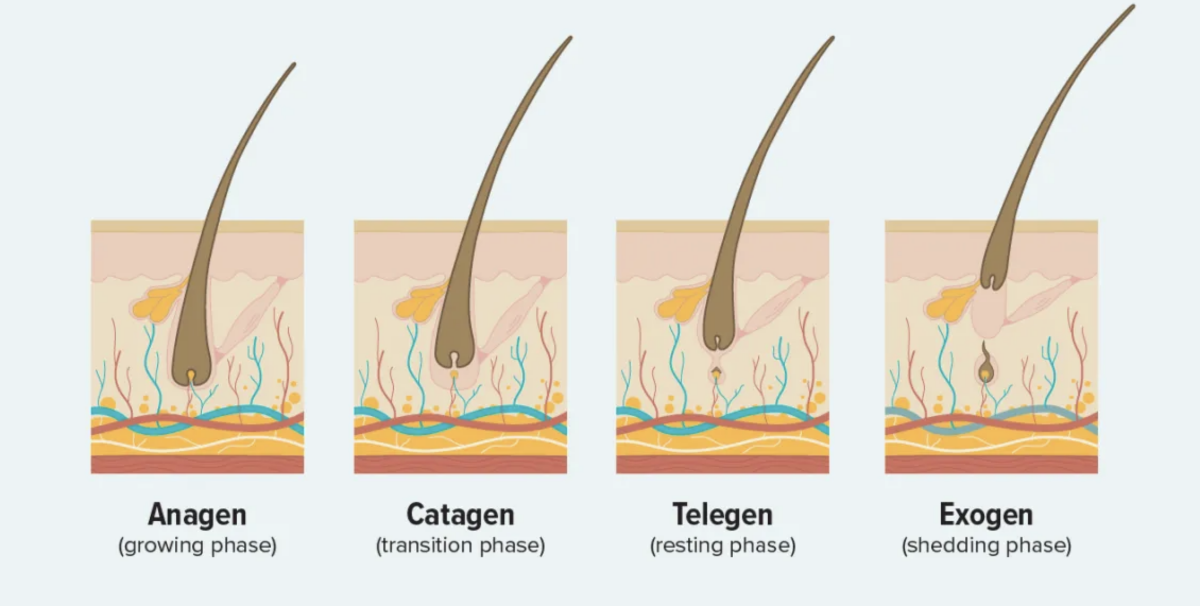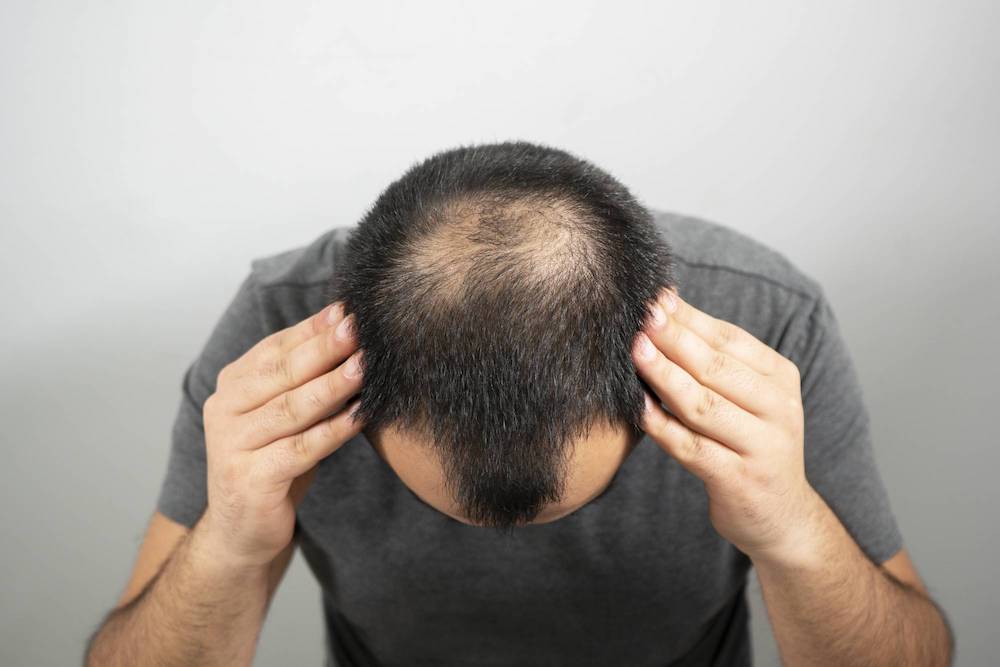Hair Loss Education
The 4 stages of hair growth
The growth and loss of hair may seem like a simple process, but the hair growth cycle is actually composed of four distinct phases – Anagen, Catagen, Telogen, and Exogen. The first three phases — Anagen, Catagen, and Telogen — cover the growth and maturation of hair and the activity of the hair follicles that produce individual hairs. During the final, or exogen, phase, “old” hair sheds, though usually, a new hair is getting ready to take its place.
1. The Anagen Phase is considered the growing phase. It’s the longest phase, lasting about 3 to 5 years for the hairs on your head. During this phase, your hair follicles are pushing out hairs that will continue to grow until they’re cut or until they reach the end of their lifespan and fall out.
2. The Categen Phase is also known as the transition phase. During this phase, hair follicles shrink and hair growth slows. The hair also separates from the bottom of the hair follicle, yet remains in place during its final days of growing. This phase only lasts about 10 days.
3. The Telogen Phase is also known as the resting phase. During this phase, your hair doesn’t grow or fall out and it typically lasts 3 months.
3. The Exogen Phase is also known as the shedding phase. The exogen phase is essentially an extension or a part of the telogen stage of hair growth. During the exogen phase, hair is shed from the scalp, often helped along by washing and brushing. Losing 50 to 100 hairs per day during the exogen phase is normal.

What is the normal cycle of hair growth and loss?
The normal cycle of hair growth lasts for 2 to 6 years. Each hair grows approximately 1 centimeter (less than half an inch) per month during this phase. About 90 percent of the hair on your scalp is growing at any one time. About 10 percent of the hair on your scalp, at any one time, is in a resting phase. After 2 to 3 months, the resting hair falls out and new hair starts to grow in its place.
It is normal to shed some hair each day as part of this cycle. However, some people may experience excessive (more than normal) hair loss. Hair loss of this type can affect men, women and children.
Causes Of Hair Loss
Hereditary hair loss
Both men and women develop this type of hair loss, which is the most common cause of hair loss worldwide. In men, it’s called male pattern hair loss. Women get female pattern hair loss. Regardless of whether it develops in a man or woman, the medical term is androgenic alopecia.
Is regrowth possible?
Age
With age, most people notice some hair loss because hair growth slows. At some point, hair follicles stop growing hair, which causes the hair on our scalp to thin.
Is regrowth possible?
Alopecia Areata
Alopecia areata is a disease that develops when the body’s immune system attacks hair follicles causing hair loss.
Is regrowth possible?
Childbirth, Illness, or Stress
A few months after giving birth, recovering from an illness, or having an operation, you may notice a lot more hairs in your brush or on your pillow.
Is regrowth possible?
Hair Care
If you color, perm, or relax your hair, you could be damaging your hair. Over time, this damage can lead to hair loss. If you often wear your hair tightly pulled back, the continual pulling can lead to permanent hair loss. The medical name for this condition is traction alopecia.
Is regrowth possible?
Women’s Hair Loss
It’s estimated that more than 50% of women in the U.S will experience hair loss in their lifetime.
Many women spend countless hours thinking about their hair, whether it is caring for it, coloring it, styling it, wearing it in different ways. however, most women never consider the prospect of losing it. Unfortunately, women’s hair loss is common and can stem from a wide number of causes. The good news is that hair loss never has to be permanent.
Our hair rejuvenation treatments that are clinically proven to work.
Female hair loss looks and feels different to every woman. It is important to seek treatment as soon as you start seeing signs of your hair changing.
- Thinning All Over
- Excessive Shedding
- Thinner Ponytail
- Widening Part
- Temporal Loss
- Patches of Hair Loss
- Receding Hair Line

Male-Pattern Baldness: What to Expect
A receding, M-shaped hairline is a sure sign of it. Next, the locks on top of your head start to thin, leaving a bald spot. Eventually, the two meet and you’re down to a horseshoe pattern of hair around the sides. The Norwood scale is used to rate male-pattern baldness.

Men’s Hair Loss
About 85% of men will have major hair thinning by the time they’re 50. Some guys start to lose theirs before they turn 21.
Hair loss, or alopecia as doctors call it, doesn’t usually signal a medical problem. And it doesn’t harm your health. But worrying about how it affects your looks is common. Almost all hair loss in guys results from male-pattern baldness, a genetic trait that comes from your parents. Other causes include certain medications, too much vitamin A, or not enough protein. Illness or stress can lead to sudden, heavy shedding called telogen effluvium. The good news is that hair loss never has to be permanent.
Our hair rejuvenation treatments that are clinically proven to work.
